If you are wondering if planting potatoes in your Utah garden is worth it, we’re here to encourage you to go for it.
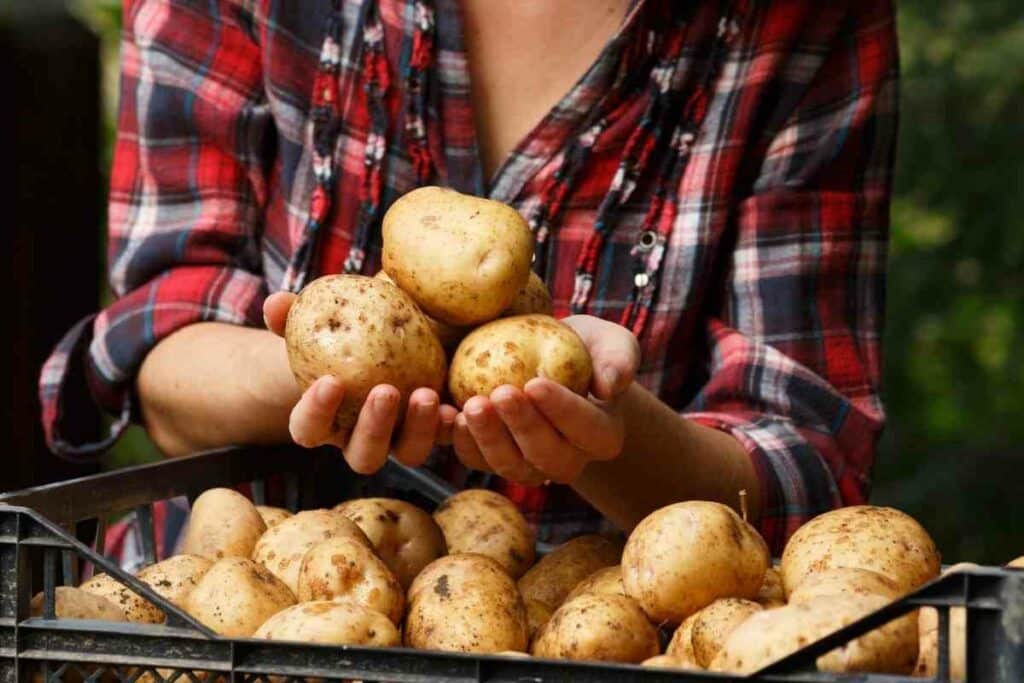
After all, Solanum tuberosum is native to the Americas and you can even successfully grow potatoes in desert conditions.
Want to learn how it’s done? Read on for our handy growers guide for potatoes in Utah, including the best varieties, growing techniques, and tips and tricks to make a success of cultivating your crop of Utah potatoes.
Knowing the growing zones and conditions is key to growing potatoes in Utah
Utah has a unique topography and climate which affects the growing conditions for potatoes.
Though it is semi-arid and mountainous, it has a range of climates and planting zones, so you will need to check what your local conditions are.
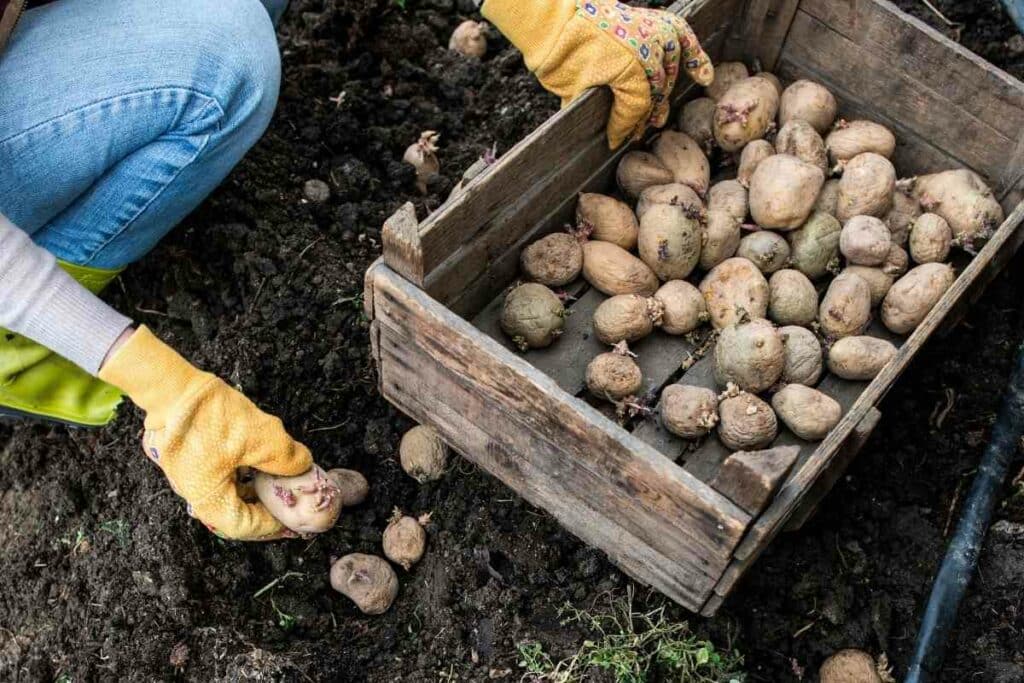
The USDA plant hardiness zones in Utah range from:
- 4a: covering minimum average temperatures between −30 °F (−34.4 °C) and −25 °F (−31.7 °C)
to
- 9a: covering minimum average temperatures between 20 °F (−6.7 °C) and 25 °F (−3.9 °C)
For the parts of eastern Utah known as the rain shadow, rain is limited, but the State gets most of its rain from fronts moving in from the Pacific Ocean.
And, of course, the winter months bring in snow, especially along the Great Salt Lake.
The varied conditions mean that, depending on availability, you can successfully cultivate most potato varieties in the State of Utah.
As long as your soil temperature is above 50°F (10°C), you should be fine.
However, some tips and tricks for growing potatoes in the desert will always prove valuable.
Which potatoes grow best in Utah?
Utah State University’s agricultural extension has researched the best vegetable varieties for the Utah climate.
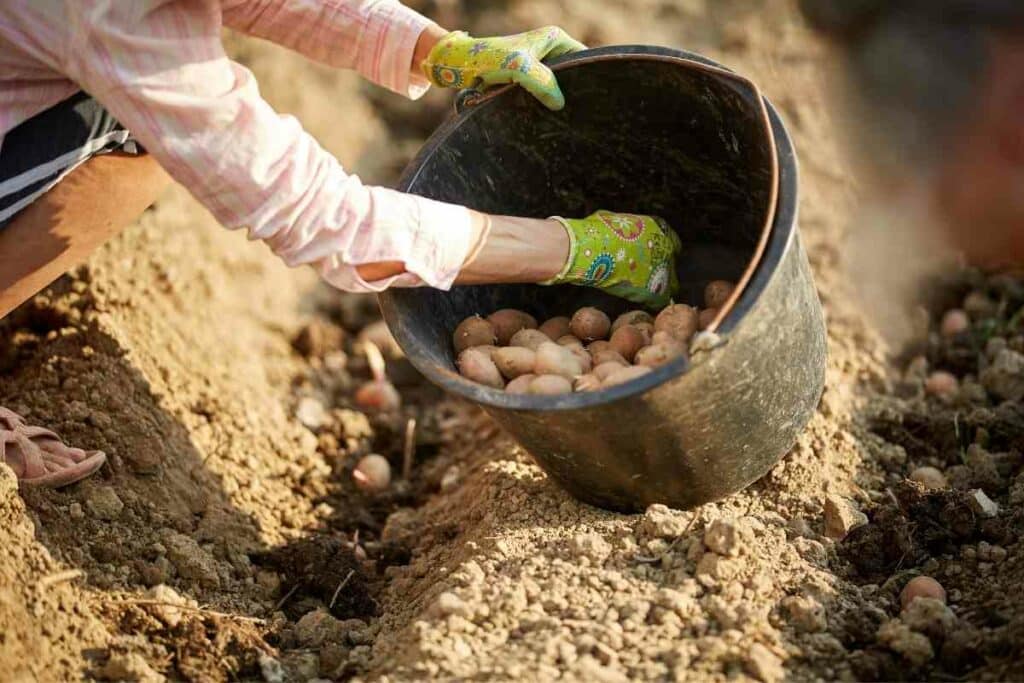
Select these varieties for the best results in Utah soils.
You’ll enjoy baking and boiling this potato as it has white mealy flesh.
Norgold Russett
Days to maturity from planting: 95-110
This is a popular potato variety that is fast-maturing and well-adapted to the midwest and western regions of the US.
Norgold Russett potatoes are elongated with russet skin that is scab resistant.
Kennebec
Days to maturity from planting: 125
This is an All-American potato variety that was first bred by the USDA in Maine in the 1940s.
It is another fast-growing variety with satisfyingly high yields of white potatoes that are used in chip-making.
It has some great benefits for the Utah climate, including resistance to dry rot, tuber net necrosis, and late blight.
Red Pontiac / Dakota Chief
Days to maturity from planting: 125
If you prefer red potatoes, the Red Pontiac has a classic waxiness that makes it perfect for a potato salad.
It is a US-bred potato variety that came to prominence in the 1940s.
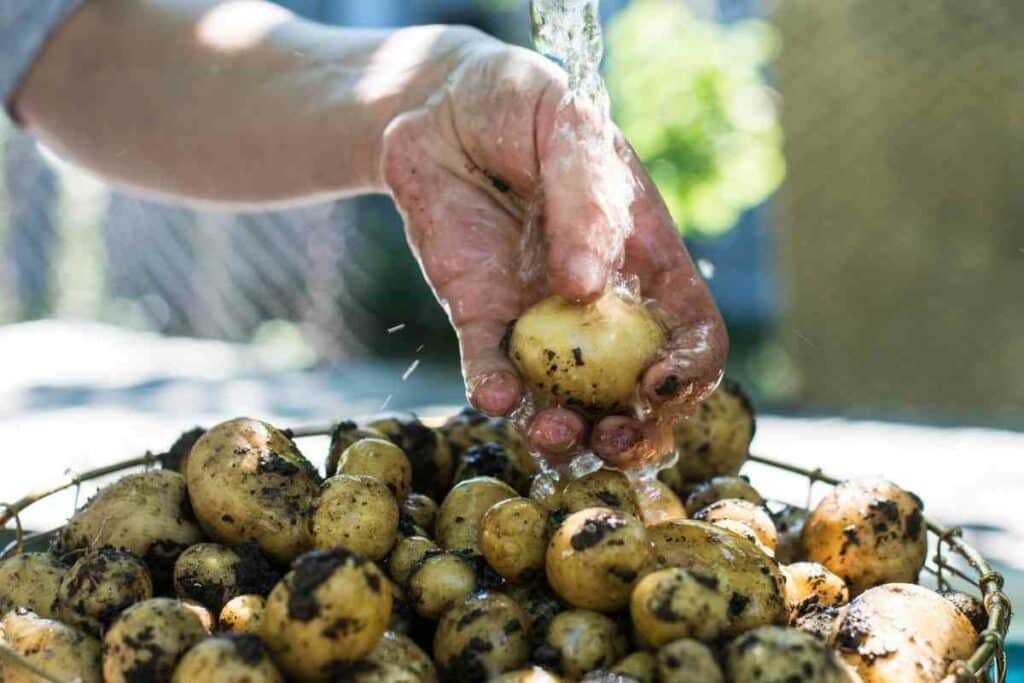
Red Norland
Days to maturity from planting: 125
North Dakota Agricultural College developed this variety in the 1950s, and it has remained popular in the west.
It has early maturity, but its yields are considered moderate to low. It has a higher susceptibility to blight and viruses than the other recommended varieties.
Russet Burbank
Days to maturity from planting:125
This is the most widely grown potato in North America and is an elongated white-fleshed potato that is usually prepared as French fries and mashed potatoes.
It is highly disease-resistant and stores well for long periods.
How to grow potatoes in Utah
Growing potatoes in Utah is not much different from growing them in the other 49 states.

As with most garden cultivation, you’ll get out what you put in, and using the well-adapted varieties shared above should get you great results.
Here are the basic steps.
1. Prime your soil
Even if you are living in a dust bowl, you can prepare a raised bed with well-drained soil with plenty of organic matter to feed the potato.
A sandy Utah soil that drains well will be on your side.
You can prep your Utah soil with liquid fertilizers or a one-inch layer of rich compost.
2. Prep your potatoes
Grow whole or partial potatoes in your backyard.
For the best results, get certified seed potatoes as they are more likely to be disease-free.
If you cut a potato into pieces, each piece should have at least one eye.
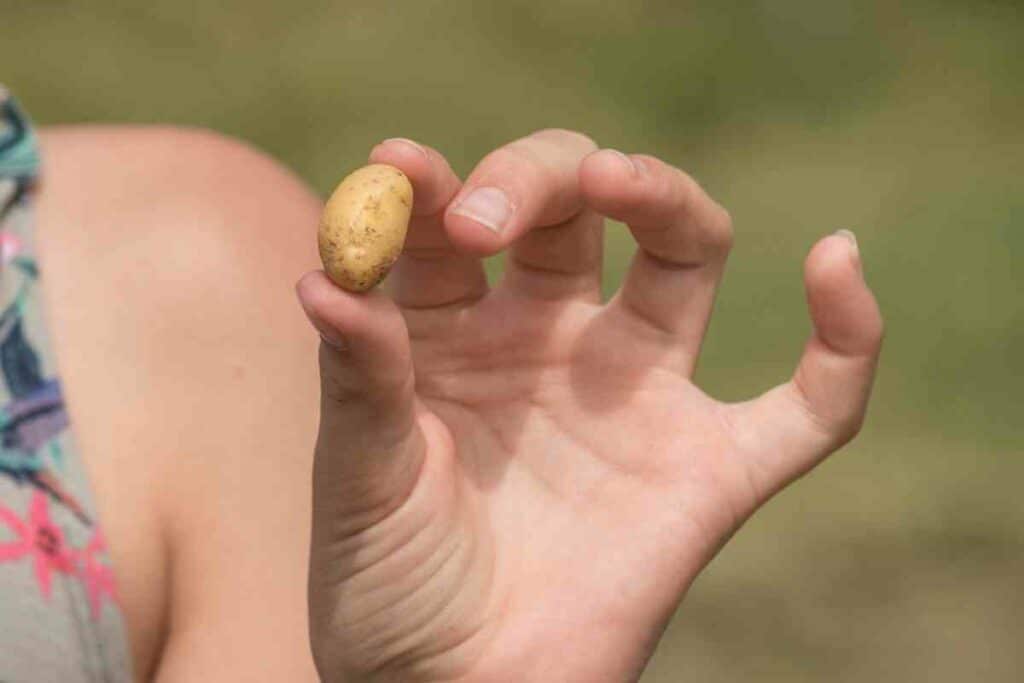
3. Chit your potatoes
You can speed up the growth of your potatoes using a process called chitting.
This involves simply leaving them out in a cool, dry place.
The light exposure will stimulate their sprouting, which can help them grow early varieties.
4. Plant out your potatoes
You’re now ready to get those potatoes in some decent soil.
Plant your rows of seed potatoes, at a depth of between 4 and 6 inches with the seed potatoes being no less than 30 inches apart in a row.
Aim for planting only 10 seed potatoes per 100 square feet of your garden.
5. Hill up the soil on your potato plants as they grow
Hilling up soil around your potato plants feeds them, supports the stem, and provides room for the developing tubers.
Create your mounds within four weeks of planting.

6. Consider mulching your potatoes
Mulching is a great way of preventing weeds and keeping warmth and moisture in the soil.
Black plastic can keep the heat in when growing earlies but you can also use grass clippings or straw as an effective mulch.
7. Control your watering
Overwatering can be a problem, especially in cooler weather.
Too much water increases the potential for blight and can give rise to waterlogged potatoes that rot easily.
After the most intense summer heat has passed, cut back on the water for your potatoes.
Err on the side of caution by watering your potatoes with no more than 2 inches of water per week.
8. Harvesting your potatoes
Potato pests and diseases in Utah
Utah State University advises that these are the most common pests and diseases in the state:
Colorado potato beetle
These little yellow and black beetles can quickly defoliate your potatoes. The best method of control is hand-picking.
Flea beetle
These are small and shiny black beetles that target young potato plants, reducing their vigor and yield. They respond to insecticides.
Early blight
Even in desert climes, over-watering and watering late in the day can precipitate the appearance of black spots and rot on the leaves.
Manage blight by removing affected leaves and reducing watering.
Tips for growing potatoes in the desert
Growing potatoes in the Utah desert is not much different than growing them in more temperate climes.
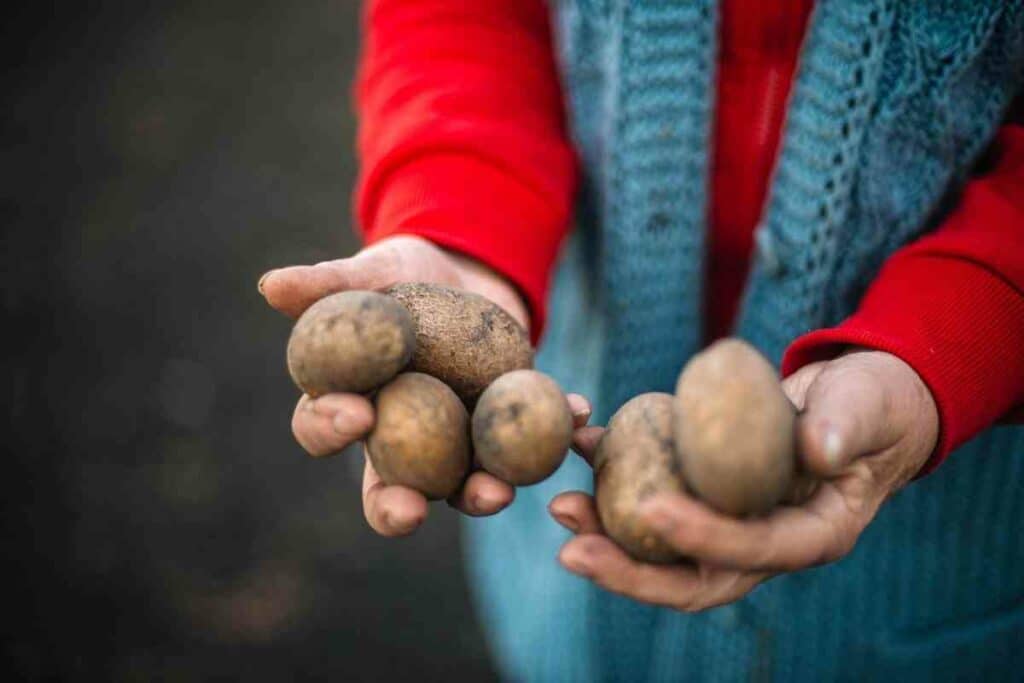
There may be some advantages as the weather is drier, making it less easy for blight to take hold.
Here are some quick tips for growing potatoes in the desert.
Containers help you get conditions just right
By growing your potatoes in containers, you can achieve perfect soil conditions, even if you live in a dust bowl.
You can get a good crop of potatoes by growing in hessian sacks, empty bins, and even an old paddling pool!
Mulch, mulch, mulch
Achieving the full sun your potatoes need will be no problem in the desert, but keeping your potatoes adequately watered may be.
A decent mulch makes all the difference in arid conditions as the water you add is retained in the covered soil.
Try the hay method
It sounds crazy, but you can grow your potatoes in a hay bale!
Simply plant the potatoes deep in the hay bale and water.
You can enjoy a great crop of disease-free potatoes fed by the decomposing hay bale.
See how it’s done here!
You may get a longer growing season
If you start your potatoes early in Utah, you may be able to enjoy up to four plantings in the year, because of the warmer desert temperatures.
Start your early potatoes, as early as the beginning of March depending on your last frost date.
Rounding up
As you can see, growing potatoes in Utah does not have to be a challenge.
With well-adapted potato varieties available, you can easily get growing and enjoy your delicious crop!


